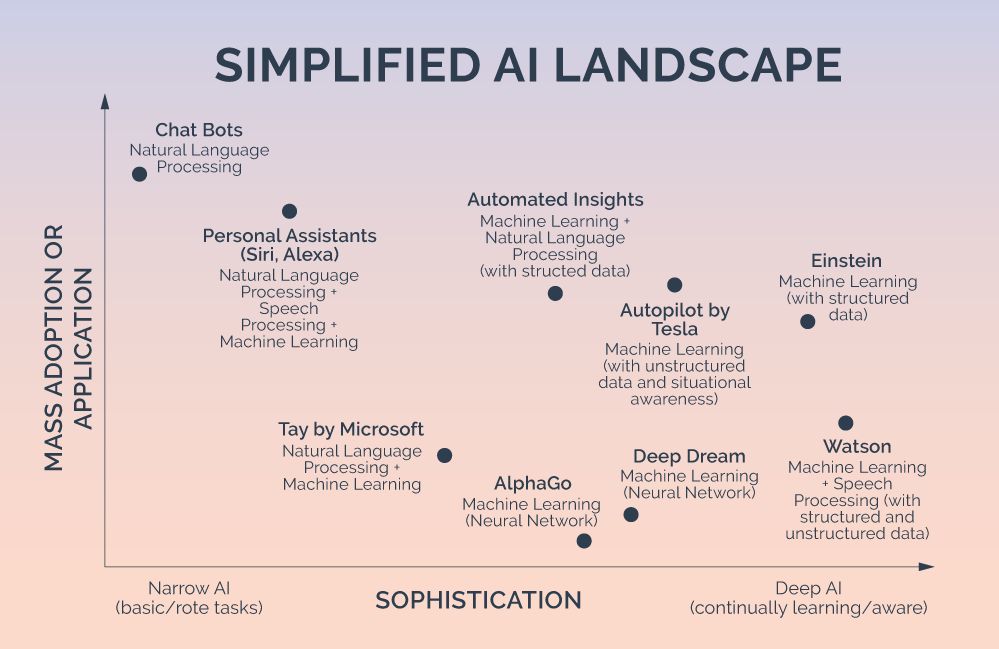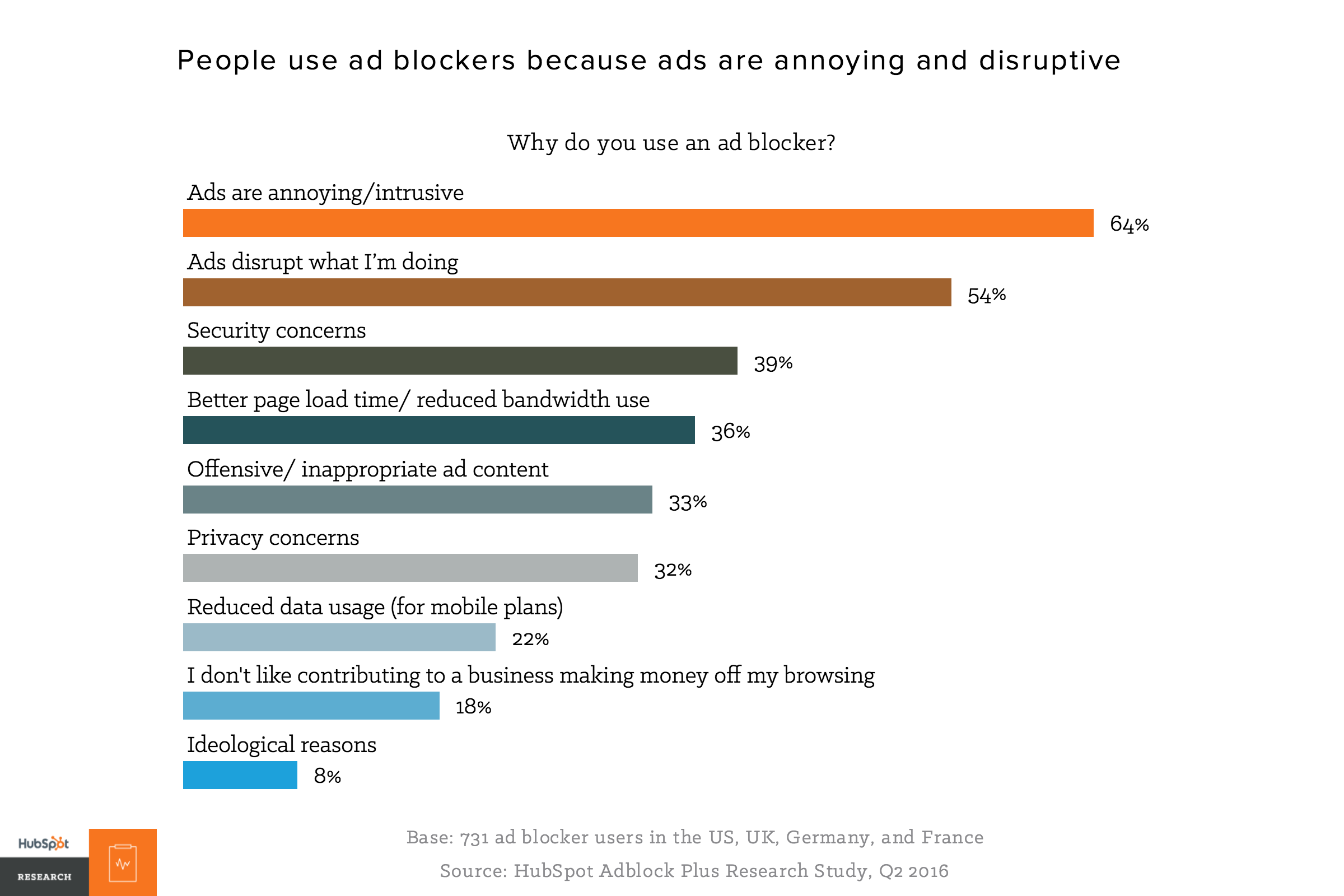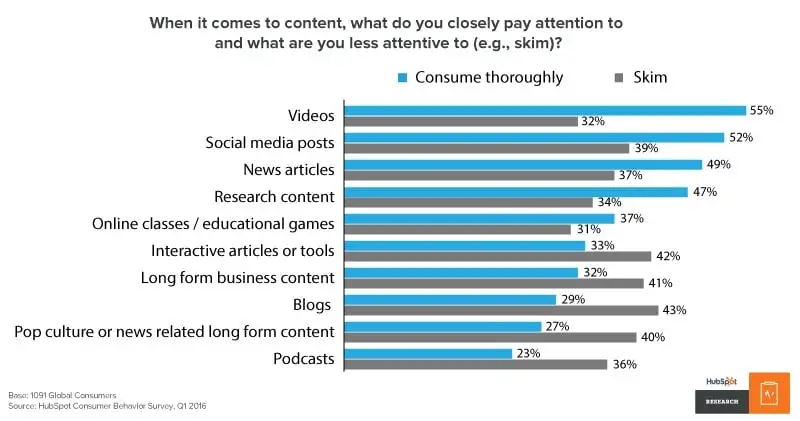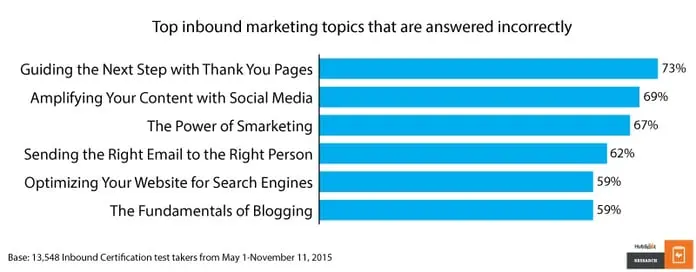TL;DR: Today’s small business owners represent the most technologically savvy cohort of SMBs that has ever existed. From email infrastructure to search engine optimization, CRMs to automated customer support – SMBs today have access to unprecedented technological power, and use it every day to grow better.
But the development of new technology never stops. In recent years, the rate of emerging technology seems to have reached a fever pitch as headlines announce the arrival of artificial intelligence and cryptocurrency prices threaten the arrival of a new bubble (and ensuing burst).
Should SMBs be paying attention to all the noise? Do these emerging technologies represent imminent disruption? What’s hype and what represents real opportunity for business growth?
This report is designed to break down the big five emerging technologies: artificial intelligence (AI), Blockchain, Cryptocurrency, Augmented Reality/Virtual Reality, and the Internet of Things (IoT). We’ll walk through the practical implications of each technology, highlighting the aspects that SMBs should be paying attention to, and what can be deprioritized (for now).
Table of Contents
1. Artificial Intelligence2. Blockchain
5. Virtual and Augmented Reality
Emerging Technologies - The HubSpot Guide
(This report is best viewed on desktop devices)
| ARTIFICIAL INTELLIGENCE | BLOCKCHAIN | CRYPTOCURRENCY | INTERNET OF THINGS (IOT) | AUGMENTED AND VIRTUAL REALITY | |
|---|---|---|---|---|---|
|
WHAT IT IS
|
Computers with “human-like” intelligence
|
An electronic ledger |
Digital currency that operates independently of central banks
|
The interconnection of the everyday physical objects to the internet
|
Technology that blends the physical world with a digital world
|
|
HOW IT WILL CHANGE CONSUMERS
|
Raise expectations of ease and convenience
|
Change our ideas about security (i.e., transparency is more secure than a traditional database)
|
Potential to break down international barriers and create a global economy
|
Raise expectations of ease and convenience
|
Increase demand for immersive experiences
|
|
PRIORITY FOR SMBS
|
High. Narrow AI is already here
|
Low
|
Low
|
Medium
|
Low
|
|
BUSINESSES THAT WILL BE IMPACTED FIRST
|
All businesses are impacted
|
Industries dealing with supply chain management
|
Businesses concerned with international commerce
|
Transportation, Healthcare, Energy/Utilities, and Manufacturing
|
Gaming, travel, tourism, home decor
|
Artificial Intelligence
What is Artificial Intelligence
When we hear the term “artificial intelligence,” we often think of a human-like robot or machine that is able to think, act and feel just like us. Although we have time until artificial intelligence (AI) can do things like write New York Times Best-Sellers and perform all human tasks, many forms of AI have already arrived.
In fact, most of us interact with AI every day, whether we realize it or not. We do things like interact with Alexa and Siri, talk to chatbots online, tag photos on Facebook, and listen to Discover Weekly on Spotify. The work of speech recognition, visual perception, and data processing no longer requires human intelligence, AI is capable of managing these tasks with ease.
All of these technologies are considered Artificial Narrow Intelligence (ANI) as opposed to Artificial General Intelligence (AGI). ANI is AI focused on a completing a single task (like talking or facial recognition), rather than all human tasks. AGI is the human-like AI we imagine - like Rosey the Robot who cleans and cooks for the Jetsons. As the chart below shows, experts don’t expect AGI for another 45 - 50 years.
Why Artificial Intelligence Matters
Andrew Ng, Co-founder of Coursera recently called AI, the “new electricity.” He said, “just as electricity transformed almost everything 100 years ago, today I actually have a hard time thinking of an industry that I don’t think AI will transform in the next several years.” Out of all the emerging technologies discussed in this report, artificial intelligence is the tech category that will have the biggest impact on society, individual consumers, and businesses. The reason AI will be so impactful is that it promises one thing we just can’t get enough of these days: convenience.
AI Technology and How it Makes Our Lives More Convenient
| PRODUCT | TECHNOLOGY BEHIND THE PRODUCT | WHAT THE PRODUCT CAN DO |
|---|---|---|
|
Amazon's Alexa
|
Natural Language Processing
|
Understand voice commands and relay information back in complete comprehensible sentences
|
|
StitchFix
|
Machine Learning
|
Analyze the fashion choices of people with similar taste and assemble personalized clothing boxes that will appeal to you
|
|
Tesla
|
Machine Learning, Situational Awareness
|
Autonomous car that is aware of its surroundings and can predict and/or prevent accidents
|
|
Facebook
|
Neural Networks
|
Use machine image systems to detect objects and classify images
|
|
Netflix
|
Machine Learning |
Personalize the cover image on movies & TV Shows to cater to a users preferred type of content
|
How SMBs Should Use AI
Unless you’re a small business or startup building AI technology, it is unlikely that you will hire someone to “do AI.” What is far more likely is that you will start to notice AI capabilities show up in the software you are purchasing and already using. The landscape of existing AI technology for businesses is already remarkable:

It’s not realistic for any business to invest in all of these AI tools at once -- stay practical and assess your top business needs, the greatest potential impact a tool may have, and then, most importantly, try it. Here are some guidelines to keep in mind as you evaluate AI’s potential for your business:
The Do’s and Don’ts of Implementing AI
| DO | DON'T |
|---|---|
|
Look to where your business already has large data sets like your CRM or ecommerce orders database. AI is only as good as the data you feed it. A small data set will only ever deliver sub-par results.
|
Make business intelligence your starting point. The future-promise is that AI will automatically surface business insights, problem areas, and opportunities. But the technology isn’t well-developed enough yet to be effective for SMBs.
|
|
Seek out opportunities to automate existing processes such as using chatbots to answer FAQS or scheduling assistants to manage your calendar. The narrow AI that exists to do these tasks is quite good, and can make you and your employees markedly more efficient.
|
Buy AI-powered tools just so you can have AI. Everyone is talking about AI right now and it create a lot of FOMO. Evaluate AI capabilities the same way you evaluate every software purchase: Do we have the time/resources/data to get value out of this tool?, Is the vendor overselling capabilities? Are there case studies from businesses like mine that show how this works in action? Is there a freemium version I can try before going all in?
|
|
Choose AI tools that are built on publicly available data that can be used to make your own business better today. For example, Text.io uses AI to parse public job postings and provide recommendations to help you improve your own recruiting efforts, HubSpot uses machine learning to understand the themes that search engines associate your content with and provide optimization recommendations.
|
Don’t fall prey to the idea that AI is some kind of magic bullet or cure-all. AI in its current form can have a positive impact on your business, but the hype is real. Be wary of any vendor promising AI that sounds too good to be true (it probably is).
|
|
Perfect your data collection processes. AI runs on data. If you’re not ready to implement AI today, now is still the right time to build internal capabilities to collect and store data: set up Google Analytics, track your sales deals in a CRM, invest in a marketing platform, start tracking customer support requests. Process, automation, and data collection today will set you up to create personalized, convenient customer experiences tomorrow.
|
—
|
The Biggest AI Opportunity for SMBs: Chatbots
Chatbots fall under the “Agents” section of the current AI landscape, where you see household names like Amazon Alexa, Cortana, and Siri. These are bots that can do everything from answer your questions, play music, or place orders for you.
But chatbots are rapidly moving out of the personal and into the business world. According to the Facebook Messaging Survey conducted by Nielsen, 67% of people say they will message with businesses more over the next two years, and 53% say they are more likely to shop with a business they can contact via chat. To manage this massive interest in communicating with businesses via messaging apps, business will need chatbots.
“Now that tech behemoths have enabled businesses to use their messaging channels, we’re starting to see valuable use cases emerge. Already, Facebook Messenger is playing host to 65 million businesses.” -- Dylan Sellberg, Product Manager at HubSpot
It’s likely you’ve already interacted with a business chatbot. Think of the last few websites you’ve visited -- has a little chat window opened up while you were browsing, asking if you needed help?
When HubSpot’s marketing team added onsite messaging in 2017 it resulted in 20% more qualified opportunities.
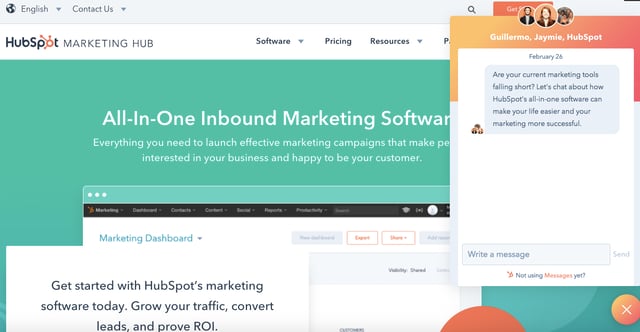
Many of these interfaces today are simply human-to-human on-site chat -- super convenient for the customer, but not particularly sophisticated technologically. Over the coming months, watch for this sophistication to increase rapidly.
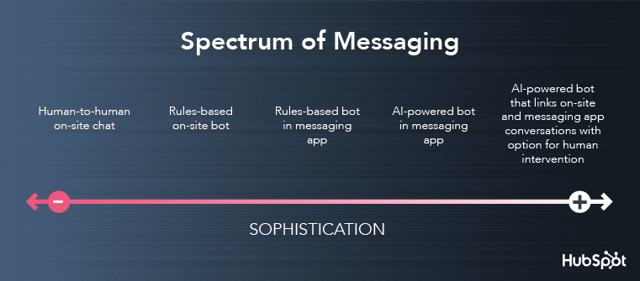
Today, messaging is how customers and prospects want to communicate with businesses, and chatbots are how businesses make these conversations scale. Automating messaging using chatbots is the most impactful artificial intelligence use case today, having the potential to deliver better results across all departments–marketing, sales, and customer support.
Where there is a messaging app, there will be a chatbot. And these chatbots will enable businesses of any size to have scalable, convenient, 1-to-1 conversations whenever and wherever the customer prefers.
Blockchain
What is Blockchain
According to our research, blockchain is one of the most confusing emerging technologies for SMBs to understand.
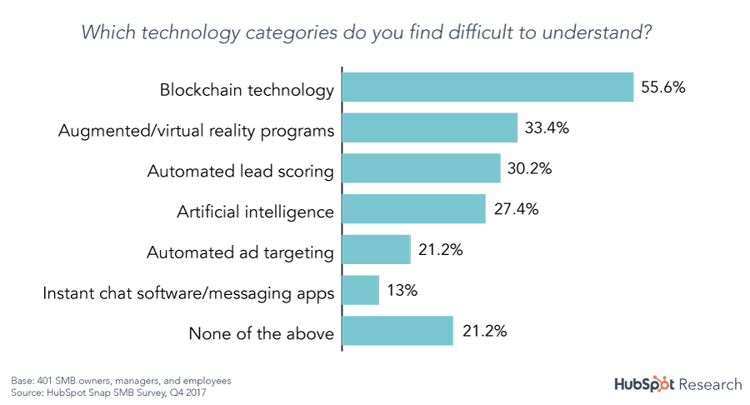
So let’s try and clear this up. In its essence, a blockchain is an electronic ledger with some nifty security features: It’s a record-keeping technology that is nearly impossible to tamper with. That’s because a blockchain’s records, or “ledger”, is hosted by everyone in the network and openly available to everyone in the network, like a public spreadsheet that they add to, but can never edit or delete.
Here’s the simplified process: When someone wants to add new record, or ‘block’, to the ledger, they need to first solve what is essentially a math problem. This is where the term ‘mining’ comes into play -- to solve the encryption math problem, computers use their computing power to ‘mine’ for the answer. When they get the answer, it is vetted by all the others in the network, and the new block is allowed to be added to the ledger if the answer is correct. A token, or ‘coin’, is generated when this occurs almost like a receipt to prove it happened.
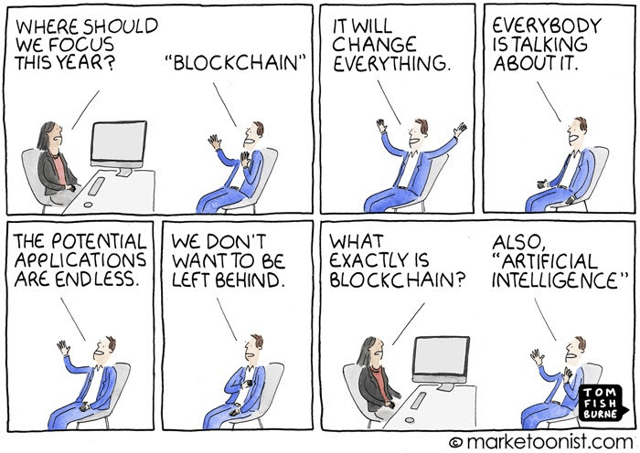
Why Blockchain Matters
Blockchain has two incredibly valuable elements:
1. It records the transfer of digital assets, like files or bitcoin, which can be used to prove transactions or ownership.
2. Its ledger technology can never be overwritten or tampered with due to the way it stores data and its distributed architecture.
Because this ledger is distributed across everyone who is part of the blockchain network, if someone manages to mess with their ledger for nefarious reasons, there will be a million other instances of the ‘correct’ ledger that exist. And what’s more, the technology itself can ‘reject’ the fake ledger by recognizing that it does not match the millions of other records out there.
Additionally, Blockchain is set up to leverage the computing power of everyone involved in the ledger, so that means there's no central database that could be vulnerable to attack or change. This decentralization and distribution of the official system of record makes blockchain virtually tamperproof. What’s interesting is that Blockchain’s total transparency makes it secure -- a counterintuitive idea to be sure.
"Blockchain technology is going to change consumer behavior around ownership and security. Now, we feel much safer having a business own and manage our sensitive information rather than bearing the burden ourselves. The rise of decentralization and the ability to have more control over your own personal assets will change that mindset. More and more businesses will be pressured to shift data ownership back to their customers. Those that resist may get left behind." -Matt Howells-Barby, Global Director of Acquisition, HubSpot
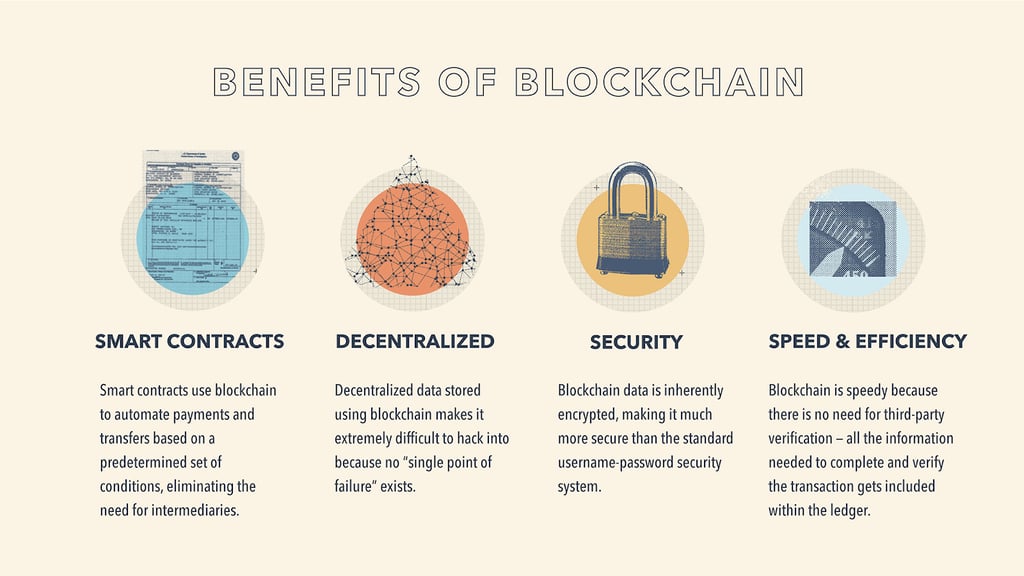
The promise of blockchain is that our most important records -- whether it’s for a cryptocurrency, a car, medical information, or even a deed to a house -- would be tamper proof and safe from fraud on a blockchain.
Let’s use an example of a shipment of bananas to clarify:
As the shipment of bananas makes its way from Warehouse A to Delivery Truck B to Grocery Store C, its movement is captured and stored on the electronic blockchain ledger that’s accessible on the internet. All three institutions (and anyone else on the ledger) have access to that information online.
Let’s say Delivery Truck B gets into some trouble, loses the bananas, and decides to be less than honest. They tell Grocery Store C that they delivered the bananas, when in fact they didn’t. They may even mess with their version of ledger to ‘prove’ that there was a delivery. But because Warehouse A and Grocery Store C has a record of the bananas’ movement on their ledger, they can inspect their records to see if the delivery actually happened. Even if Delivery Truck B managed to tamper with their own ledger (which is very difficult to do), there are systems in place that prevents them from pushing out their false changes to the rest of the ledgers on the network.
.jpg?width=1024&name=Banana_Stand-01%20(1).jpg)
How SMBs Should Use Blockchain
Blockchain's unchangeable ledger and its potential security strengths make it an exciting new technology for any business that holds or transmits sensitive information. Unchangeable ledgers can reassure consumers and businesses that important transactions will not be hacked or rerouted. But while blockchain has an enormous potential, its use cases are still niche and appeal primarily to enterprises. Blockchain is unlikely to have a meaningful impact on SMBs for at least another 3-5 years.
There are three exceptions to this prediction:
- Supply chain management: For example, a small jeweler could leverage blockchain technologies to assure their customers the stones they sell are sourced from a sustainable or humanely run mine. An SMB concerned with tracking the movement of goods through a supply chain will want to pay closer attention to improvements in blockchain technology.
- Standards in data storage: One of biggest potential use cases for blockchain is to change how we store data -- making ledger-based storage superior to (sometimes questionably) secure databases. Start-up R3 promises to do just this, and has more than 60 firms using its blockchain platform, including Microsoft and Inte l. But it is mostly blue chip companies exploring this blockchain use case currently, and it is unlikely to impact SMBs without significant improvements in cost & usability.
- Password protocols: Currently, there are two top contenders for disrupting the painful system of passwords: bio recognition, and blockchain. If blockchain technology delivers in solving this problem, SMBs will certainly want to take note.
Cryptocurrency
What is Cryptocurrency
The last few months have seen interest in cryptocurrency explode as the value of these currencies rises. Voices in finance, business, and regulatory world have weighed in for and against cryptocurrencies. But amid all the hype, cryptocurrencies still promise one undeniable benefit: easy, cheap, international payments.

Cryptocurrency and blockchain are often tied together in news stories and explainer guides. This is because the blockchain system was built as a way to enable the ‘exchange’ of cryptocurrencies. Cryptocurrencies, such as Bitcoin, leverage blockchain technology to allow users to directly send digital assets (like a ‘coin’) to one another in a secure, traceable, and tamper-proof way.
Proponents argue that cryptocurrencies offer these benefits:
- They are a decentralized, borderless currency. Cryptocurrencies are tracked and stored in a decentralized system, with no single point of failure, which makes it a robust and relatively secure form of wealth transfer.
- They are tamper-proof and trackable. The ledgers that record transactions from owner to owner sits on a blockchain, which we know are immutable and more secure than conventional data storage constructs. Users can then be comforted knowing their records will always be correct.
- They are a secure way of directly sending and storing wealth. By virtue of recording transactions on the blockchain, users have a higher level of trust and security as they exchange cryptocurrencies or other assets. Now, no system is completely impervious to attacks, but many believe cryptocurrencies offer a superior level of security.
- They offer anonymity. While transactions and ledgers are openly available, it’s possible to employ tactics to mask identifying information (name, address etc) that ties a user as an owner of a particular block’s key. Each cryptocurrency has varying levels of anonymity, but in general, a user has more opportunity to ensure their anonymity with cryptocurrency compared to using a standard bank account or credit card to make transactions.
The benefit of anonymity has been a complicated incentive for people to invest in cryptocurrencies. When cryptocurrencies first came into prominence, many worried that that currency’s primary use case was for cyber criminals to stash their ill gotten gains or trade illegal goods or services on the black market. In the early days, cryptocurrency was not seen as a respectable investment vehicle to the masses because of its association with dark web activities.
Cut to the present, where there is now a mass frenzy for cryptocurrencies like Bitcoin, and many are reevaluating cryptocurrencies’ place in society. Concerns about black market trading, a speculative bubble, and lack of rigorous regulation still exist. But due to the explosive growth in value of Bitcoin, Ethereum, and Litecoin, among others, more and more investors are jumping onto the bandwagon. Some are doing so in the hopes of getting rich quickly, both other are buying because they believe in the benefits listed above.
Why Cryptocurrency Matters
Cryptocurrency is an important emerging technology because of the threat it poses to financial institutions. A bank makes money in two primary ways:
- Loaning money
- Fees
Cryptocurrencies threaten to disrupt both of these revenue streams. If wealth is stored in the ledger of cryptocurrency rather than the ledger of a bank, the bank can’t leverage that money for other business pursuits. And if two parties can exchange money directly, with no middleman, the banks are also losing out on of their biggest fees -- international exchanges involving currency conversion.
The mass adoption of a currency like Bitcoin wouldn’t just upend financial institutions, it could also upend the dominance of the dollar as the world standard currency. A world where Bitcoin was the first international currency would be a huge step forward in globalization; making international payments of any size easy, cheap, and secure.
The promise of cryptocurrency is that it could democratize the transfer of money, creating a world that is financially borderless. Still, this new technology has hurdles to overcome. First, entrenched powers are threatened by the advent of cryptocurrency, with many governments internationally offering hints that they may move to ban crypto trading. South Korean officials recently said they had no plans to ban cryptocurrency trading, but even the talk of a ban crashed the value of many popular currencies.
Second, while the technology that enables cryptocurrency (blockchain) is secure relative to existing technologies in existence today, users are still dependent on the classic login process. These steps have proven to be the weakest link in security. There are instances of large scale hacks, most recently with Coincheck in Japan, that results in millions stolen. And there are countless stories of individuals who forgot their login information or cold storage password and thus are unable to access or use coins they own.
How SMBs Should Use Cryptocurrencies
Cryptocurrencies still have some fundamental issues to work out before this technology will achieve mass adoption. And until consumers show adoption of and a preference for crypto, it won’t impact the day-to-day of SMBs.
Two exceptions to this would be if:
- You are an SMB that does a significant portion of your business internationally. Payment processing is one of the most complicated pain points of international business, and cryptocurrency is a promising solution. Shopify, one of the top ecommerce platforms; and Stripe, a major processor of internet payments; began accepting Bitcoin in 2013 and 2014 respectively. This seemed like a milestone in Bitcoin adoption, but earlier this year Stripe announced it is discontinuing support for Bitcoin –citing slow processing times and volatility in value.
- You are a startup looking to raise funding. Initial Coin Offerings (ICOs) have become the hottest new to earn capital, with startups like Mark Cuban backedUnikoin jumping on board this trend. Think of it as a ‘GoFundMe’ for businesses, where individuals receive ‘coins’ from the business in exchange for investing.
But the kicker is that these coins may never grow in value, and the investors will not get a share of the business or its profits, which is usually the case in traditional fundraisers for capital. Shareholders of businesses can typically exert some pressure if they feel the business they’ve invested in is going awry.
It’s less obvious how ICO coin holders can influence the businesses they invest in and there’s the potential for them to lose their entire investment. As a result, this practice has drawn extensive criticism and regulators are evaluating the practice today. ICOs allow small businesses and startups to bypass the traditional investment channels today to raise capital, but they pose some dangers to individual investors.
Internet of Things (IOT)
What is IOT
Today, we can buy light bulbs that we switch on from our phone, refrigerators that send us snapshots of what’s inside, and even cooking pans that tell us the optimal temperature to sear our salmon. Consumers today are truly living in the age of convenience. These internet-enabled products are IoT devices and are designed to give users the ability to tailor their experience with a product to their specific preferences.
In turn, IoT products generate a flow of usage data that’s usually accessible to both the product’s user and the product’s maker. Consider a fitness tracker that someone wears on their wrist. The user can access the data they generate to see how many steps they walked in a day, track exercise, sleeping patterns, and even track their calorie count and weight. The producer of the fitness tracker also has access to that data and can leverage it to send tailored recommendations to the user or gather information across their user base to develop new features or accessories.
When businesses collect, store, and analyze data from the connected devices they produce, they can use the insights to improve their product’s user experience, improve the connected experience across all customer touch points, and better appeal to prospective customers.
Many people are connecting the various devices they own to create a tailored experience at home: they use voice commands to turn on TVs or lights, activate their coffee makers from bed so a fresh cup is ready once they hit the kitchen, or integrate security monitoring devices with their phone so they can check in on pets or children who are home unattended.
On a larger scale, cities are installing IoT enabled infrastructure, such as street lamps or traffic signals, that allows them to control and monitor electric use or redirect traffic. These are the interconnected ‘Smart Cities’ that we often hear about. Many cities around the globe are investing in IoT devices and leveraging their data outputs to better allocate their resources, save money, and understand where and when people congregate.
Why IoT Matters
Like artificial intelligence, IoT will greatly increase convenience, raising consumer expectations for effortless experiences. It will also involve massive data volumes and the associated risks of processing and storing this data.
This data is the result of automated collection. Connected homes and cities are constantly recording data behind the scenes. John Rossman, author of “The Amazon Way on IoT”, states that IoT data collection is faster, cheaper, and more up to date than manual data collection. IoT connected devices essentially convert the analog world into a digital one where everything can be measured and monitored. Pairing this data with AI analytics technologies will surface new insights that we’ve never been able to in the past, simply because: previously the data did not exist, and we didn’t have the technology available to analyze it.
Most people envision consumer products when they think of IoT. But IoT’s reach is incredibly deep in the B2B world. There are numerous applications for IOT across industries to track moving objects, monitor machinery, and post progress updates in central repositories. Currently, the Transportation, Healthcare, Energy/Utilities, and Manufacturing sectors are amongst the biggest adopters of IoT. In fact, most businesses that work with industrial machinery, logistics, and inventory have IoT enabled devices and programs to ensure its operations are running smoothly. Healthcare practitioners are also increasingly leveraging IoT devices to monitor and at times even diagnose patients based on the data IoT devices have collected.

The IoT ecosystem is massive today. There were 10 billion devices connected to the internet in 2015. Forecasts estimate that will increase to 31 billion IoT devices by 2020. McKinsey estimates IoT’s economic impact will be $11.1 trillion by 2025, and roughly 70% of the total economic impact of IoT systems will be from B2B applications.
How SMBs Should Use IoT
The quickest win in IoT today is in voice controlled speakers. Industry analysts estimate that Amazon has sold over 30 million Alexa-enabled units, and project that by 2022, there will be 244 million voice-enabled IoT devices in households. Other players in the space include Google, Apple, and Microsoft. These devices present two voice-related opportunities:
- Building for voice controlled speakers. Both Google Home and Amazon Alexa allow developers to build apps that integrate with devices. For example, Capital One built a skill that allows you to check your credit card balance and pay a bill through Alexa, and OpenTable lets you book a reservation at your favorite restaurant through Google Home.
- Voice search. With the proliferation of voice-enabled devices which span from speakers to TVs to phones, more and more people are comfortable using their voice to search for content. SMBs should treat voice search as an emerging marketing channel, and begin experimenting with their voice search strategy.
The second opportunity in IoT is for SMBs that currently produce physical products. Any manufacturer today should at least be exploring if there is potential to increase the value of their product by turning it into a data-collecting, connected device. But if that leap makes sense for your business, you will go from being a manufacturer to being a software business, and that has some important implications which we will cover in the next section.
The third opportunity in IoT is for SMBS to use IoT devices to improve business operations. Vendors such as Losant, ThingWorx, and Carriots all offer services for businesses to connect various products, collect data, and conduct analysis.
McKinsey put together some key questions to ask when developing a comprehensive IoT strategy.
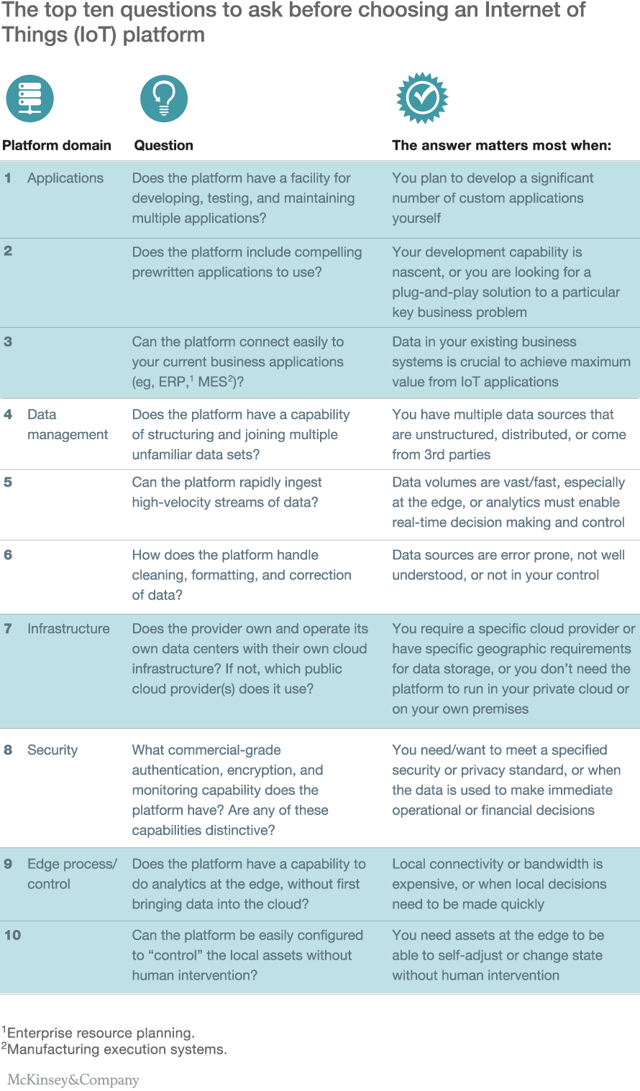
Take note: Security is the biggest flaw the IoT ecosystem
The flow of user generated data is the biggest opportunity and risk when it comes to IoT. A wealth of user data creates compilations around security, data ownership, and privacy. Recent examples include:
- Hackers remotely killing a car while it was driving on the highway.
- Hackers breaking into baby monitors.
- A fitness-tracking map inadvertently revealing the location of military training facilities.
IoT devices are evolving rapidly and are subject to few existing regulations around privacy, data ownership, and security. This puts the onus on SMBs that create or leverage IoT products to be thorough in how users’ data is collected, stored, used, and secured.
Virtual and Augmented Reality
What is Virtual and Augmented Reality
Augmented reality (AR) technology allows people to add digital assets into their physical environment. Think of Pokemon Go, the mobile game that rose to stratospheric popularity earlier in 2017, as good example of augmented reality. With the help of a phone, you could ‘see’ a Pokemon near you by pointing your camera at your surroundings. You augment your reality by superimposing a pokemon into your surroundings, and you get to interact with that pokemon through your phone.
Augmented reality is the precursor to the more immersive virtual reality (VR) experience, which is now predominantly focused on the gaming and entertainment sector. Today, you can buy headsets like the Oculus that allows you to completely ‘live’ in the virtual reality simulation. It’s a wholly immersive environment which allows the user to interact with a virtual world.
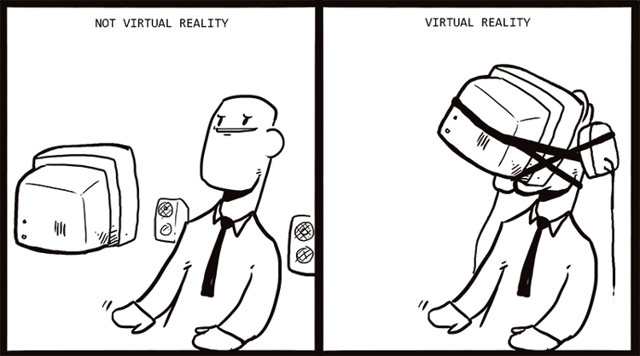 Source: Dueling Analogs
Source: Dueling AnalogsWhy VR and AR Matters
Our concept of reality is going to completely change as AR and VR technologies are refined in the next few years. AR already allows people to interact with digital objects in their home, in stores, and in public spaces. VR allows people to completely leave their surroundings and experience new worlds created by artists, software engineers, and businesses.
Both AR and VR technology acts as a bridge between the physical and digital world, and is a step forward in how people will interact with digital objects. In particular, VR has clear cut ramifications for the gaming, leisure, and healthcare industry.
People today primarily think of gaming when they think of virtual reality -- and that’s because the top use cases for both AR and VR fall under gaming. Based on VR sales figures, millions are interested in having more immersive gaming experiences. Some VR arcades are already creating incredible virtual experiences, with wind machines blowing in the users face to simulate movement and rigs to stand or sit on.
The leisure industry is also focusing on AR and VR. AirBnB wants to help people visualize their potential accommodations before they book. Stores, resorts, and cities are creating completely immersive experiences where visitors can visit a vacation spot without leaving their home. Though the ultimate goal is the entice people to make the physical journey, virtual vacations can open up the world to people who previously could not travel for health or safety reasons.
Finally, medical students today use VR to learn or practice medical procedures. Doctors at the Children’s Hospital, Los Angeles are using VR to prepare for crisis situations or uniquely complicated procedures. Ultimately, the impact of AR and VR extend beyond the boundaries of gaming into verticals such as healthcare.
How SMBs Should Prioritize VR and AR
With the exception of breakout hits like Pokemon Go, adoption of AR and VR technology has been slow. But this could change quickly -- both Apple and Google’s Android are investing in the AR capabilities of their operating systems. Once AR-enabled smartphones are the norm, expect consumer interest in and comfort with these emerging technologies to rise.
Enterprise companies are already beginning to experiment with these technologies:
- Ikea used Apple’s ARkit to allow users to drop a piece of furniture into their home to see how it would look.
- The New York Times is experimenting with AR news stories that embed the reader in the location or event they're reading about. Many got to experience a new side of the 2018 Winter Olympics through the Times’ AR stories.
- Retail companies like Starbucks are hoping that by becoming early adopters, they can corner the AR/VR market and lead the way with new, compelling use cases.
And for SMBs with an appetite for experimentation and a compelling idea, there are ways to affordably experiment with this new technology. What’s more likely than building a complete AR experience, however, is the opportunity to capitalize on the next big AR trend.
Thanks to Pokemon Go, many SMBs have already capitalized on AR as a means of increasing customer traffic and interactions without actually building software. Small businesses partnered with the developer of Pokemon Go by making their business a PokeSpot and saw upticks in foot traffic and a $2000 average increase in weekly sales. In example like this, small businesses sponsor the AR experiences instead of building them, and SMBs should pay attention to trends like this that offer growth opportunities.
Virtual reality, which requires custom hardware to use, is much harder to crack. Industry data shows about 1.7 million units of Oculus Rift, Playstation VR, and Vive were sold in 2016, with an estimated 2.4 million units shipped in 2017. The current VR landscape is a mix of three separate virtual reality platforms with an overall a footprint of just 4.1 million units worldwide. If only a few million people purchase VR headsets, is it worth it for a small business to create an immersive application for those people to use? For most businesses, the answer is no.
There are select industries that will see a VR opportunity open up in a more near-term timeframe (see Gartner’s Landscape below). But until one VR platform begins to show market dominance, and consumer behavior shows a strong preference for VR experiences -- it’s hard to see investment in VR high on an SMB’s list of strategic priorities.
The real test is if long-term, sustained use cases for AR and VR develops that are outside of the gaming and leisure categories. That’s when businesses of all sizes can jump into the technology.
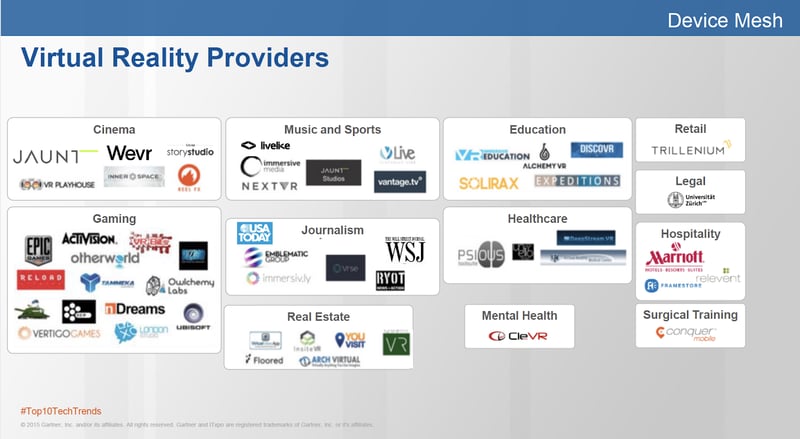
This report contains links for HubSpot Content, Products, and Services.

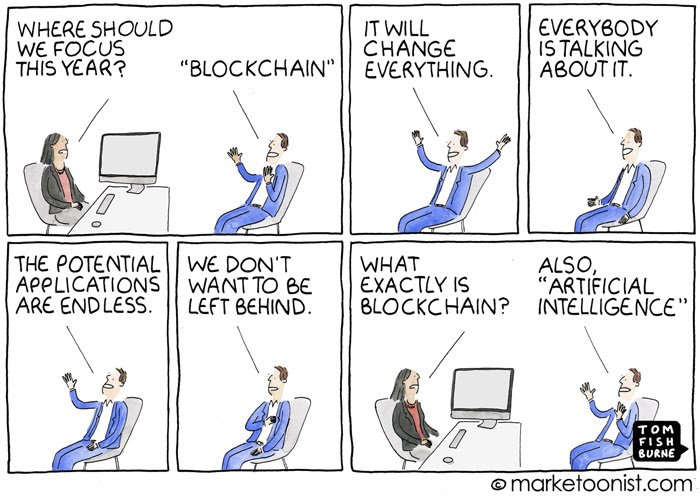
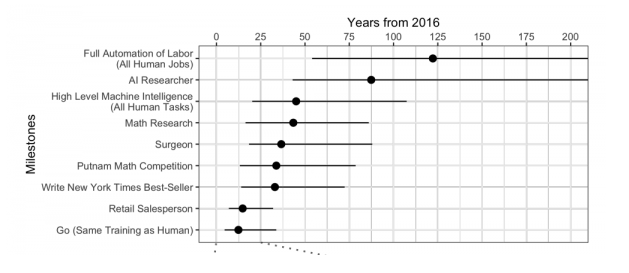

![How AI Perceptions Have Changed in the Last Decade [Comparing New & Old Consumer Data]](https://53.fs1.hubspotusercontent-na1.net/hubfs/53/artificial-intelligence-is-here_3.webp)
